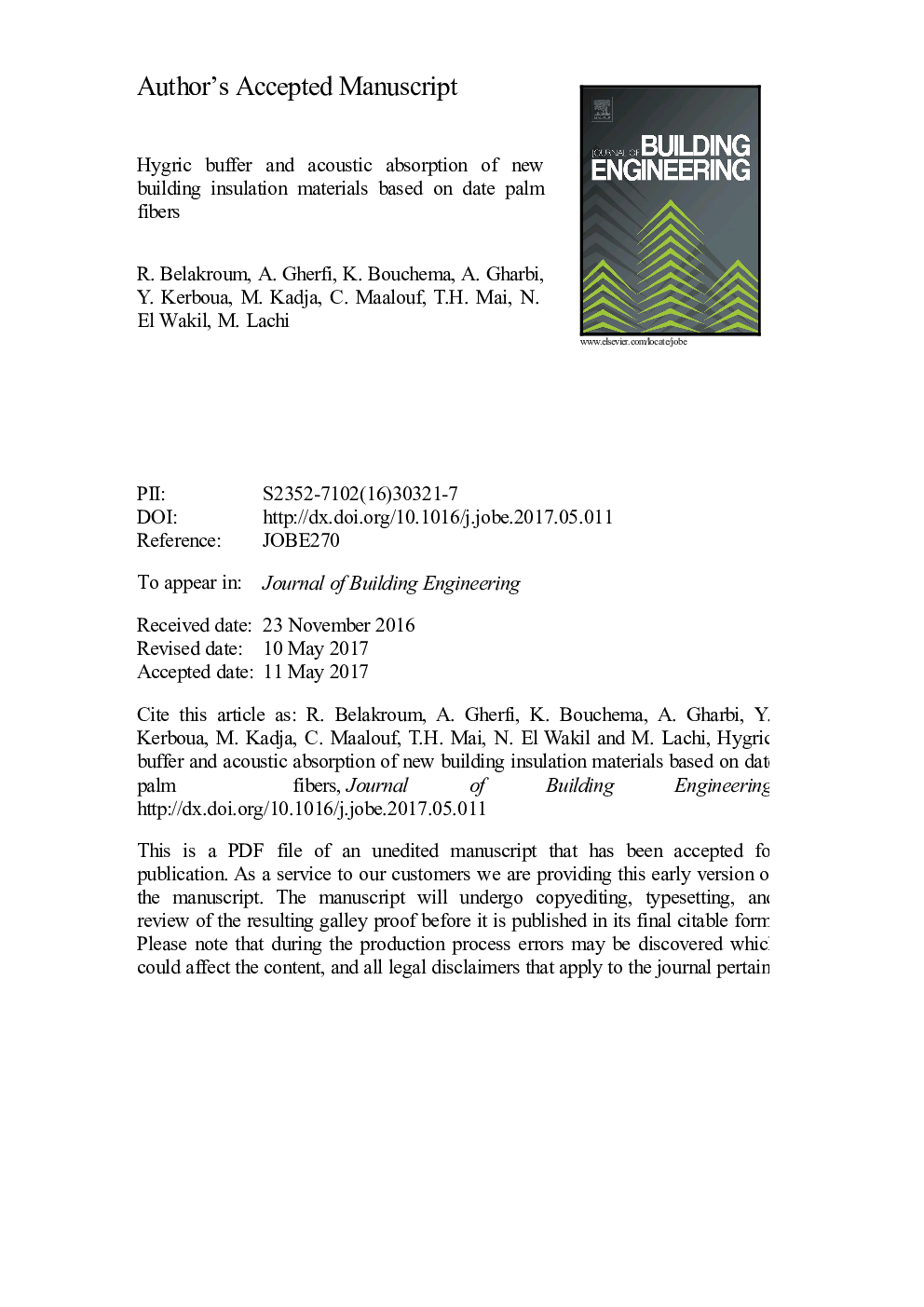| Article ID | Journal | Published Year | Pages | File Type |
|---|---|---|---|---|
| 4923148 | Journal of Building Engineering | 2017 | 28 Pages |
Abstract
The sound absorption coefficients recorded show that these materials are good sound absorber, especially in medium and high frequencies. The acoustic absorption depends on the type of binder and the fiber content. The best value observed is around 0.7 when testing samples containing 20% trunk fiber and 80% starch. From the measurements of the Moisture Buffer Value (MBV), the composite made from 50% of trunk fiber and lime has an average MBV of 3.73Â g/(m2%RH). For samples based on petioles fiber and lime, the greatest MBV measured is 2.58Â g/(m2%RH) for samples of 50% of fibers. Using starch as a binder, we recorded a moisture buffer value of 4.05 (g/m2%RH) with only 20% of trunk fibers. The results obviously show that the use of date palm fiber-based materials for noise reduction presents a smart choice and on the other hand all MBV measured classify these new materials as an excellent hygric regulator.
Related Topics
Physical Sciences and Engineering
Engineering
Civil and Structural Engineering
Authors
R. Belakroum, A. Gherfi, K. Bouchema, A. Gharbi, Y. Kerboua, M. Kadja, C. Maalouf, T.H. Mai, N. El Wakil, M. Lachi,
